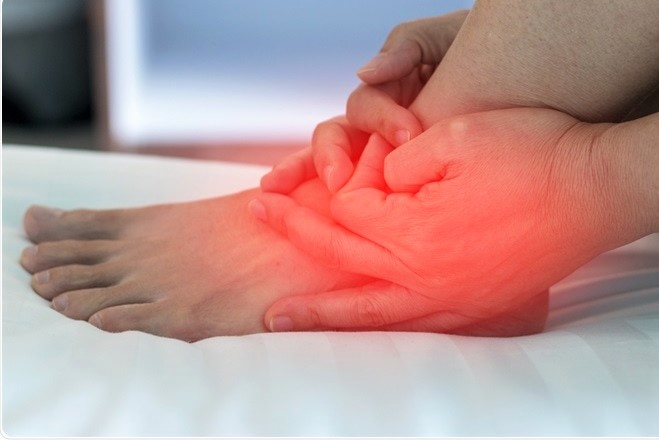
Pain in the sole of the foot: it could be metatarsalgia
Metatarsalgia: a painful sensation in the sole of the foot, localised to the metatarsus, may be a symptom of a foot pathology
A localised pain in the sole of the foot, in the area of the metatarsus, could be the sign of a foot pathology: metatarsalgia.
What is metatarsalgia
The term metatarsalgia is used to define a clinical picture with multiple etiopathogenesis, characterised by pain localised in the plantar region at one or more metatarsal heads.
This pathology mainly affects the female sex, either because of an unclear congenital predisposition or because of the negative influence of high heels and narrow toes.
Elements that lead to overload and imbalance in the forefoot.
Symptoms of metatarsalgia
What are the signs of this disease?
It is usually manifested by a significant skin callosity, a consequence of the overload, which expresses faithfully, better and before any other instrumental data, the topography of the location of the overload itself.
In addition, patients with this condition often report localised pain in the plantar area, the presence of a reactive bursitis that can turn into “hygroma” and “necrosis” and finally, in the most serious cases, rare and late bone lesions.
Diagnosis of the pathology
What are the steps to follow for diagnosis? The first is certainly the radiographic examination.
The X-ray examination of a foot affected by metatarsalgia must be carried out with dorso-plantar and latero-lateral projections, with and without support.
Other examinations to be performed are:
- transillumination podoscopy: this allows direct visualisation of the areas of overload at the metatarsal heads.
- electronic baropodometry: this allows the distribution of load within the support surface of the foot and in particular of the forefoot to be defined, identifying areas of overload.
- podiatric and baropodometric examinations: as well as providing a precise diagnostic framework, these are indispensable for assessing the results obtained with the treatment implemented (whether orthotic or surgical).
Conservative remedies for metatarsalgia: treatment with the corrective insole
Treatment with corrective insoles should be used in the initial forms of metatarsalgia, when there are few painful symptoms but objective symptoms are evident, such as calluses and corns.
This treatment can also be carried out in severe forms of pain in order to relieve the painful symptoms in the forefoot.
A prerequisite for good results is the use of a ‘custom-made’ corrective footbed made of soft material to achieve a cushioning effect.
The personalised design of the footbed makes it possible to adequately correct the static and dynamic support loads of the forefoot with the aid of ‘relief zones’.
Anti-inflammatory pharmacological therapies and physiotherapy are also frequently combined.
Surgery and recovery time
Surgical treatment is reserved for severe painful cases that have not benefited from conservative treatment with footplates.
This approach consists of selective or global metatarsal resections and osteotomies (corrective cuts of the affected bones).
Anaesthesia may be loco-regional, spinal or general and is assessed on a case-by-case basis by the anaesthetist.
The hospital stay is normally 24-48 hours.
After a few days the patient starts walking with the use of a specific shoe and, after a month, a control X-ray is performed.
The convalescence period with return to normal daily activities is rarely less than 2 months.
On the other hand, the resumption of sports activities involving the feet intensively generally takes at least 4-6 months.
Read Also:
Orthopaedics: What Is Hammer Toe?
(Also) Occupational Diseases: All Causes And Remedies Of Plantar Fasciitis


